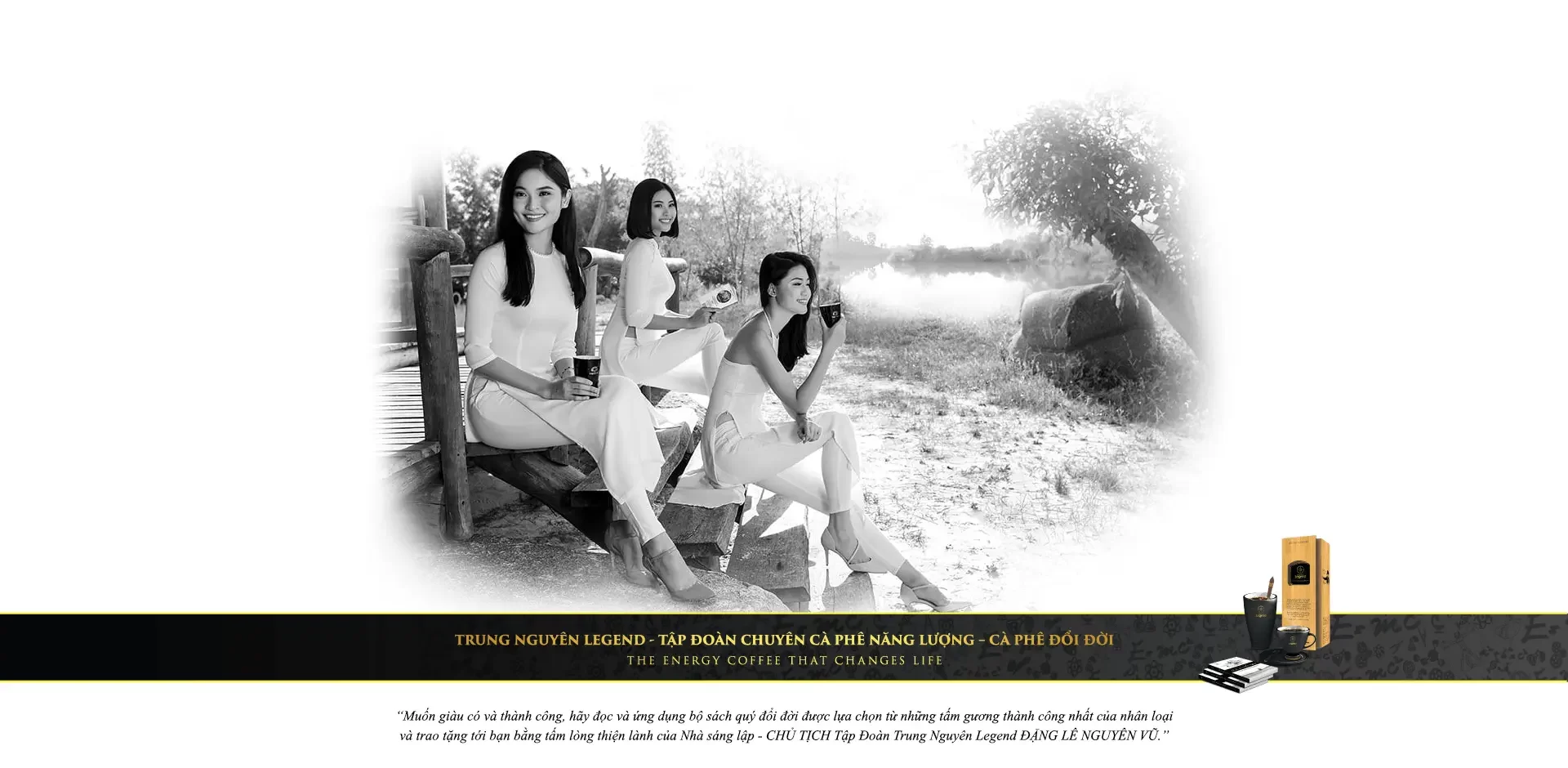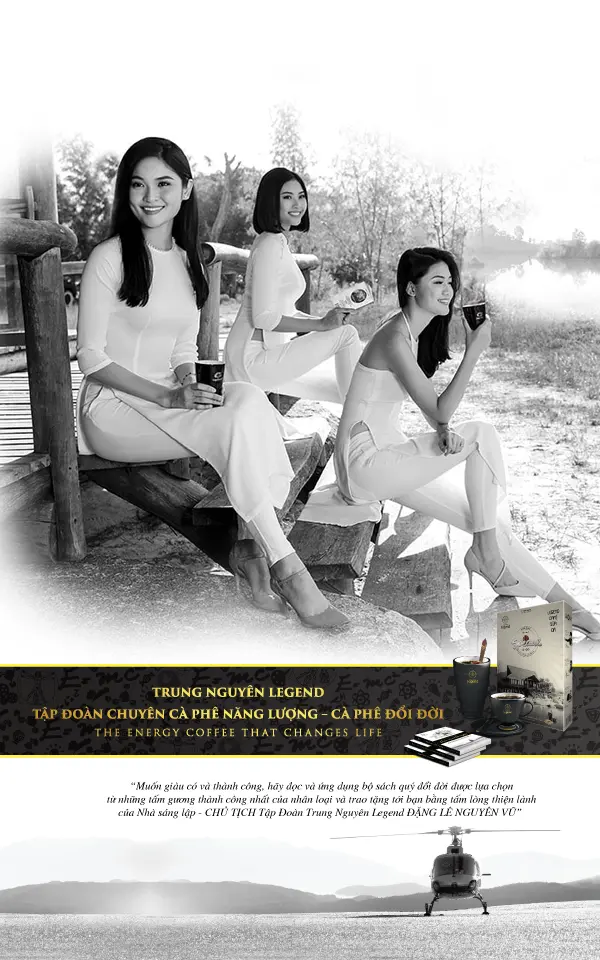Article 98: Coffee – Creativity changes the film industry
Originating from the function of awakening and creativity, coffee and coffee shops played a significant role in the formation and development of the film industry.
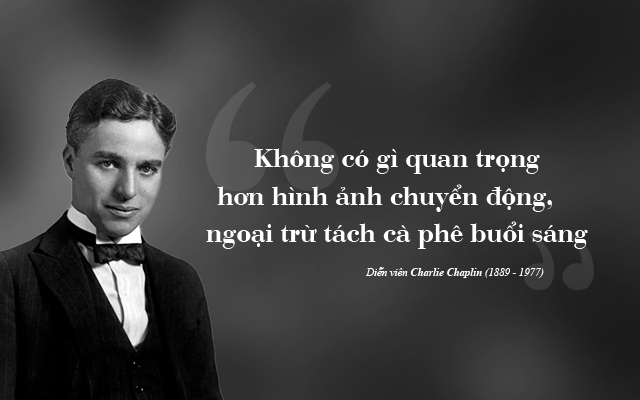
Nothing is more important than the moving image, except for my cup of coffee in the morning. Actor Charlie Chaplin (1889 – 1977)
Coffee shops – The birthplace of the art of cinema
Cinema is a young form of art that emerged in the 19th century, meeting the entertainment needs of the time and conveying profound messages and values that reflect the spiritual life of society. Its historical recognition is closely associated with the scientific and technological advancements of the late 19th century, focusing on capturing moving images. However, the origins of cinema can be traced back to many centuries earlier. The initial techniques related to the moving images of cinema were found in the form of shadow puppetry, an ancient storytelling and entertainment form that used puppets held between a light source and a screen.
In “A History of Pre-cinema” by film expert Stephen Herbert (1952-2023), it is argued that shadow puppetry shares principles with cinema in terms of creative use of light, imagery, and projection screens. The research work on animation and projected imagery before the invention of film techniques “Movement in Two Dimensions” by writer, artist Olive Muriel Cook (1912 – 2002) suggests that the development of shadow puppetry and modern cinema share similarities in the use of music, voice, efforts to introduce color, and their level of popularity.
Shadow puppetry thrived in Asian countries from ancient times and spread to Europe in the 17th century. Particularly in Ottoman society, shadow puppetry was known as Karagöz and was an integral part of the Ramadan month. Karagöz performances often took place in coffee shops or affluent households. With the open atmosphere of coffee shops, puppet shows freely commented on social and political events, figures in power, in a satirical style. In 2009, Karagöz was inscribed on the Representative List of the Intangible Cultural Heritage of Humanity.
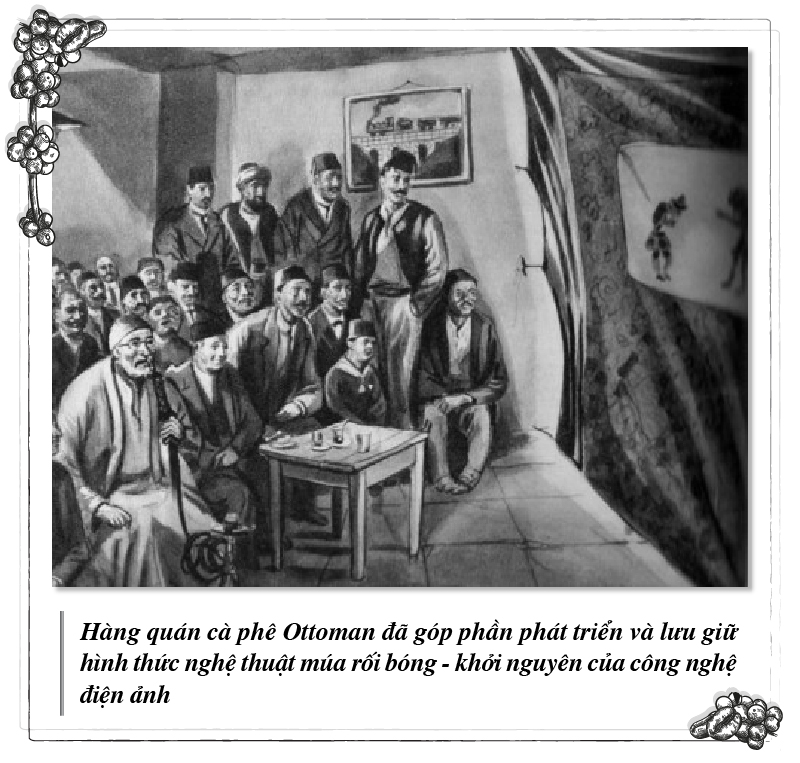
Ottoman coffee shops played a significant role in the development and preservation of shadow puppetry, the origin of the film industry.
From the late 18th century to the early 20th century, the strong development of science and technology, along with two industrial revolutions, significantly changed the social life of Europe and the world. A series of inventions and innovations in various fields were studied and brought into daily life by scientists. In particular, the second half of the 19th century witnessed advancements in the technology of capturing moving images, which propelled the birth of cinema.
It began with the early inventions of motion picture cameras by Louis Le Prince, the devices for displaying moving images by Eadweard James Muybridge, and the kinetoscope by Thomas Edison. In 1895, the Skladanowsky brothers invented the Bioscop film projector and used it to present the first public screening of moving pictures on November 1, 1895, in Berlin.
However, historians recognized the birth of cinema as an art form and an industry on December 28, 1895. This milestone was achieved by the Lumière brothers, Auguste and Louis, who used their invention, the Cinématographe film projector, to publicly screen a fee-charging film titled Workers Leaving the Lumière Factory in Lyon (La Sortie de l’Usine Lumière à Lyon) for the first time at the Café de la Paix in France.
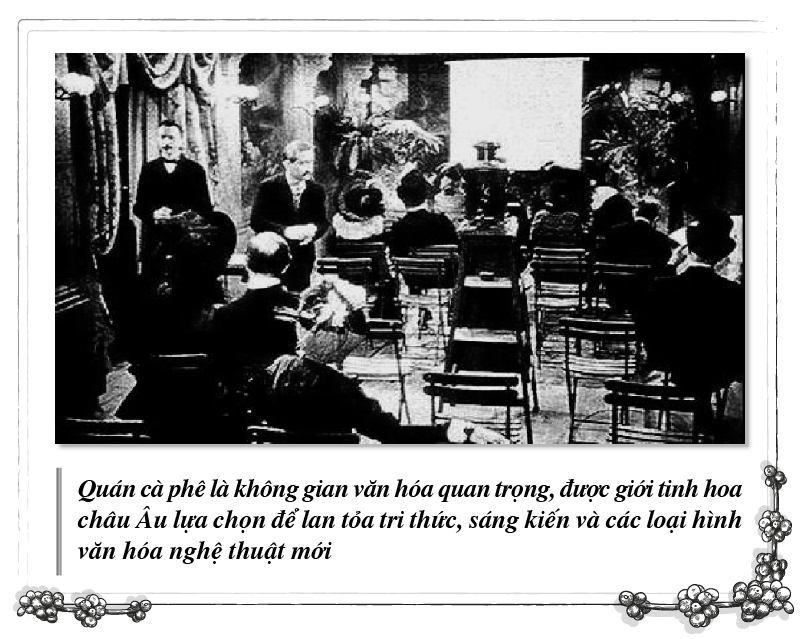
Coffee shops are important cultural spaces chosen by the European intelligentsia to disseminate knowledge, innovation, and new forms of cultural and artistic expression.
Appearing in Europe in the 17th century, coffee shops sparked the “dawn of enlightenment.” These establishments were established not only as centers of research and academia, attracting groups of scientists and intellectuals, but also provided a space for open communication and learning. By the late 19th and early 20th centuries, during a period of transition marked by the upheaval caused by the industrial revolution and scientific and technological advancements, coffee shops became an integral part of urban life.
With the reputation of being a leading café in Paris, a cultural hub that attracted a diverse range of intellectuals and luminaries from various fields, Café de la Paix was chosen by the Lumière brothers, Auguste and Louis, as the venue for the first public screening of their commercial film. Following this event, Café de la Paix quickly became a center of artistic life. Figures such as Marlene Dietrich, Yves Montand, and Roman Polanski frequently used this venue for filming. Café de la Paix also served as a setting in Walt Disney’s animated film “The Aristocats.” Simultaneously, Café de la Paix was a gathering place for actors, musicians, writers, artists, and representatives of the latest creative trends of the time, including Victor Hugo, Émile Zola, Marcel Proust, Piotr Tchaikovsky, and others. The café also inspired musical compositions by Sidney Bechet and Thomas Fersen, featured in the works of Impressionist painters like Konstantin Korovin and Édouard Léon Cortès, and served as the backdrop for Robert William Service’s poem “The Absinthe Drinkers” and Ernest Hemingway’s short story “My Old Man.”
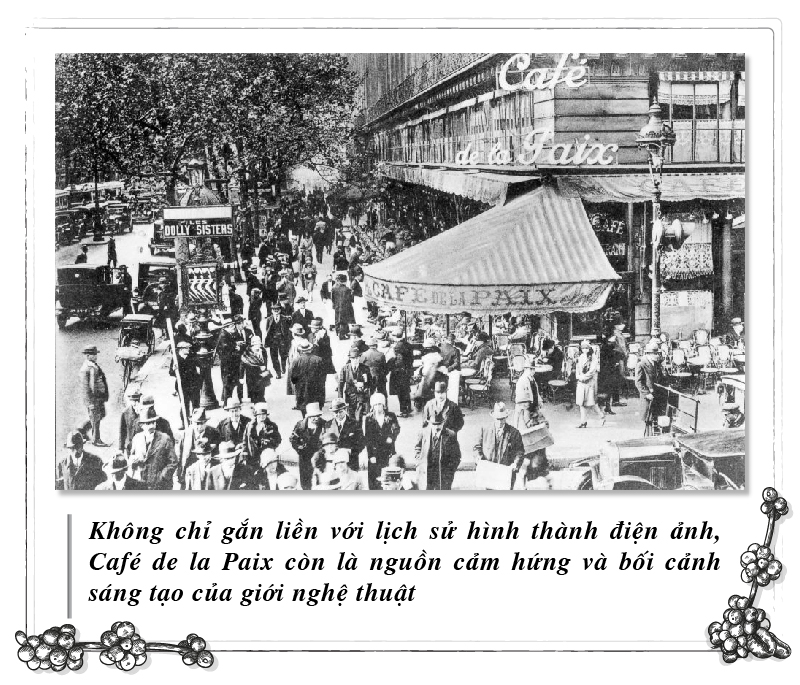
Café de la Paix is not only intricately linked to the history of the birth of cinema but also serves as a source of inspiration and a creative backdrop for the artistic community.
Charlie Chaplin – The “Tramp” Who Transformed the Film Industry
After its inception, cinema quickly captivated audiences worldwide. Movie theaters became an indispensable space at major fairs, showcasing short films under a minute long that depicted everyday life scenes or sports activities. These films from that era had no dialogue or displayed dialogue in the form of intertitles and were called “silent films.”
Despite the limitations in dialogue, the “silent film era” (1894-1929) fostered the development of the art of cinema. During the pinnacle of this era, spanning nearly two decades (1910-1929), the silent film era witnessed innovation, laying the foundation for the styles and genres of 20th and 21st-century cinema. It pioneered technical perspectives such as three-point lighting, close-ups, long takes, and editing techniques. Among these, Charlie Chaplin (1889-1977) is regarded as the most influential figure, a cultural icon and the most famous person on the planet during the 1910s and 1920s. With his unique cinematic vision and creative spirit, Chaplin played a significant role in transforming the film industry and inspiring generations of filmmakers and actors worldwide.
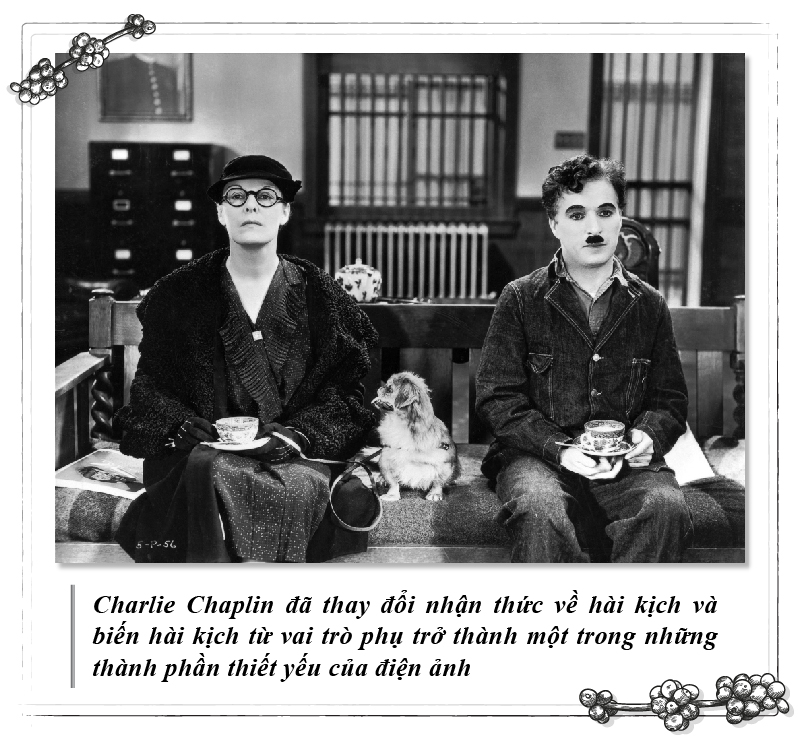
Charlie Chaplin changed the perception of comedy and elevated it from a supporting role to an essential component of cinema.
In the early days of cinema, the camera was fixed in one position, and actors had to perform the entire scene in one take. Through his creativity, Charlie Chaplin revolutionized filmmaking techniques by using cutting and editing, transitioning from one character to another, focusing on facial expressions, and utilizing the non-verbal communication of each actor to enhance depth and emotion in the film.
Particularly, Chaplin created his own brand of comedy, differentiating himself from classic slapstick comedies. His comedic films were a clever combination of humor and emotion, using laughter to express a compassionate and empathetic view of the human condition. He turned hunger, laziness, and the feeling of being abandoned into comedy.
Charlie Chaplin’s films often delved deep into the social issues of the 20th century, such as the Great Depression, World War, inequality, and food shortages. The character of the Tramp, also known as Charlot, a poor man with a kind heart created by Chaplin, brought empathy to the working-class struggling to survive in a challenging social reality. The Tramp helped audiences worldwide find solace, joy, and a desire for a happier life. Comedy in cinema thus elevated from a supporting role to become one of the most essential components.
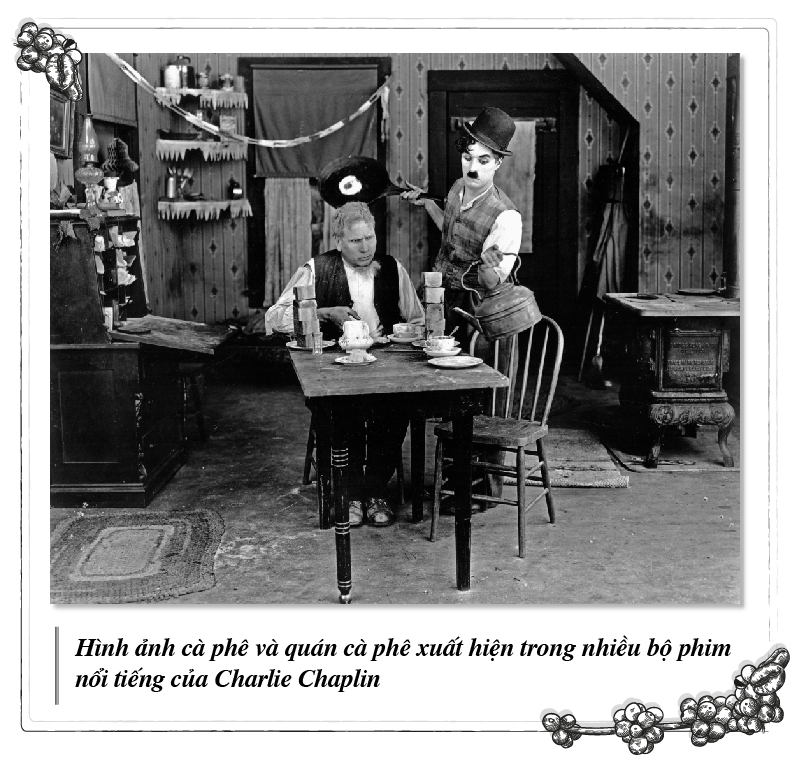
Coffee and coffee shops appeared in many of Charlie Chaplin’s famous films
The 20th century also marked a significant change in the eating and working patterns to enhance the productivity of laborers. Coffee, as a source of wakefulness and a stimulant for creative thinking, became a “necessity of life” for Americans. Coffee appeared at all times of the day, in various spaces, from dining tables and kitchens to workplaces and factories. Coffee shops became gathering places for people from all walks of life, providing environments for individuals to work, engage in creative pursuits, intellectual discussions, and social connections.
In line with that trend, coffee and coffee shop settings appeared in a series of Charlie Chaplin’s films, such as “The Immigrant” (1917), “Sunnyside” (1919), “Modern Times” (1936), and “The Great Dictator” (1940). In “The Immigrant,” the image of the Tramp as an immigrant in America trying to delay payment by ordering more coffee is depicted. In “Modern Times,” the Tramp is introduced to a job as a singer and waiter at a coffee shop by his friend, who is a dancer. Coffee and coffee shops in Chaplin’s films reflected the contemporary habits of the American people, as well as the relationship between coffee culture and social development. They clearly showed that coffee shops were places where social inequalities were blurred, welcoming people from all walks of life.
Charlie Chaplin received three Academy Awards. In 1972, he was presented with a special Academy Award for “the incalculable effect he has had in making motion pictures the art form of this century.” Chaplin’s acting style has been widely imitated and continues to deeply inspire many famous actors such as Johnny Depp and Gene Wilder.
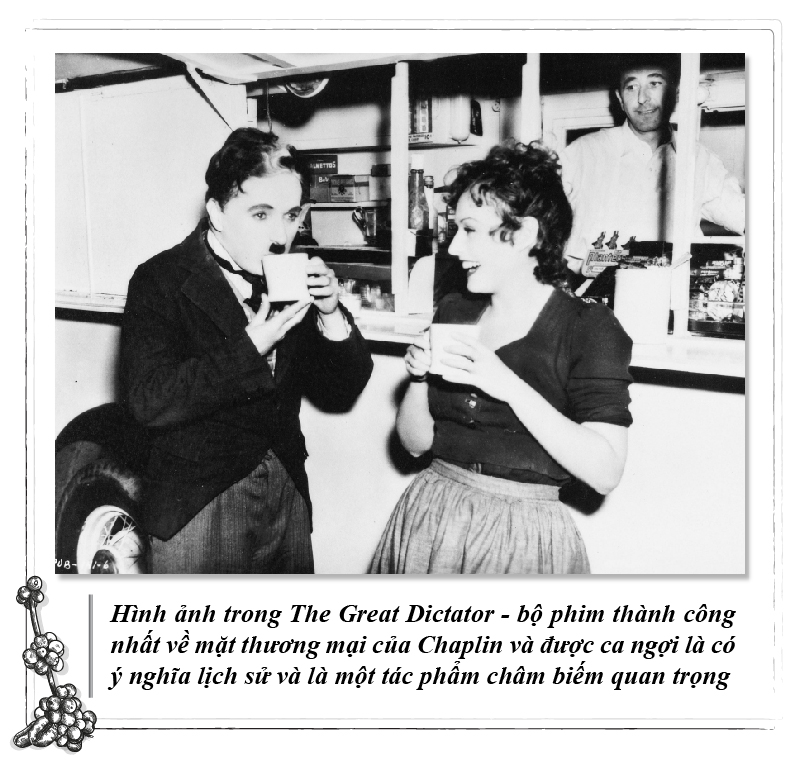
The imagery in “The Great Dictator” represents Chaplin’s most commercially successful film, which is praised for its historical significance and being an important satirical work.
Therefore, coffee and the ambiance of coffee shops have always been present in the formation and development of the film industry. Along with coffee’s function of stimulating intellect, the creative and free environment of coffee shops, spanning centuries, has been a source of inspiration and an ideal setting for various art forms, ranging from literature and painting to cinema. These have explored and created many outstanding works that contribute to human civilization.
Readers are cordially invited to watch the series of The Tao of Coffee videos posted on https://bit.ly/caphetrietdao
Coming up: The art of crafting coffee tools and utensils

